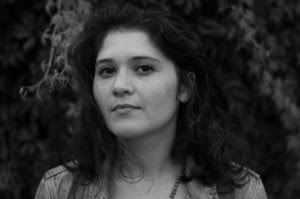Meet Yin Yoga
BY: LARA FARCASAN
The BFF practice for athletes and busy people… that you totally have time to do
If you search on social media for #yoga you’ll feast your eyes on complex arm balancing postures, gymnastic style handstands, twisting poses that almost appear to be optical illusions all set within the most aesthetically pleasing sceneries possible. Challenging poses can be beautiful when they appear effortless. Online, physically challenging poses satisfy our craving for laying eyes what a physical human body is capable of. Active vinyasa and asana is king of our online curiosity (Can I get a #yogaeverydamnday ?).
With all the spotlight an active style yoga practice gets online, you might not realize he does have a younger sibling. She’s more of a wallflower, more likely to rest in the shadows. You won’t find her on sunset beaches but in dimly lit studios doing her work. She won’t take you through 26 poses in an hour but her minimalist sequence will be independently challenging. Her efforts aren’t as publicly celebrated in hashtags and photo ops but they yield amazing insights for the practitioner. Make no mistake - she’s one powerful introvert. Her demands require not your physical strength but your steady attention. She likes her alone time so she’ll only expect you to visit a couple times a week. She is yin yoga.
Yin yoga doesn’t work at surface level. Its poses are aesthetically similar to Hatha Yoga postures but unlike its fiery counterpart, Yin Yoga asks you to relax as much as possible into the pose - and then stay there for anywhere from 3 to 20 minutes. These long, still, holds put stresses on the body’s joints and connective tissues (fascia) leading to increased flexibility, improved range of motion in joints, stimulating circulation as well as an opportunity for deep relaxation and meditation.
Yin yoga is different from a Restorative Yoga class for the reason that in many practitioners there is a sensation involved in many poses from the passive stress of these tissues. Restorative Yoga aims to make the body as comfortable as possible to find rest and relaxation (I often refer to Restorative Yoga as “Guided Nap Time”) whereas Yin Yoga aims for you to feel “productively uncomfortable” and use these sensations as a focal point for meditation (… well at least the way I teach it. :))
In most people, Yin Yoga is most beneficial when it is practiced no more than 1-2 times per week (so not as to over stress the tissues). Anecdotally, I've had students that are distance athletes credit incorporating regular yin yoga practice in their training schedule with shaving 5 minutes (!!!) off their half marathon race time. Busy students credit their yin practice with less tension related aches and pains and an effective stress relief practice. It's accessible for those who are otherwise active as it doesn't add hours to your weekly routine.
The longer holds in a yin yoga class provide you with time to fully experience a yoga practice on a level deeper than what is visible to others or to your camera. It's quality over quantity, substance over style. It doesn't stand in the spotlight but its charms are hidden in the shadows. Hang out with Yin Yoga from time to time and she'll teach you a lot about yourself.
Lara Farcasan



